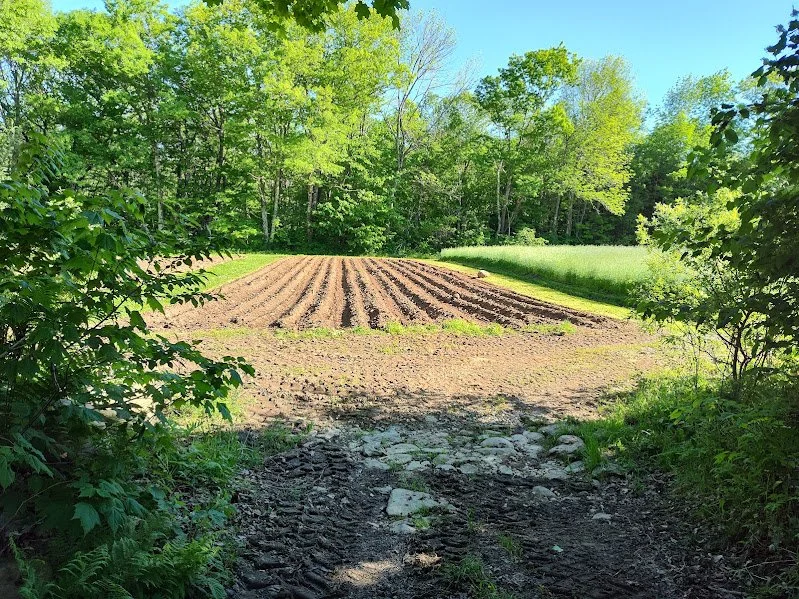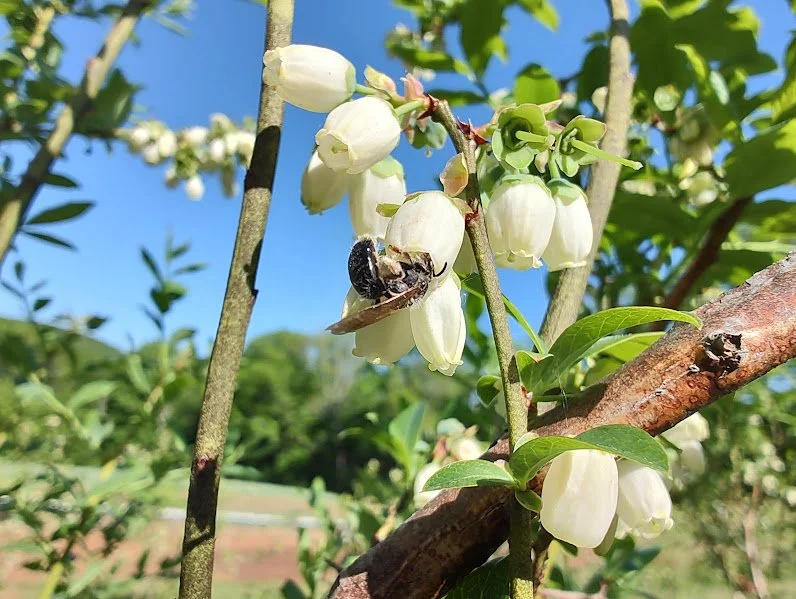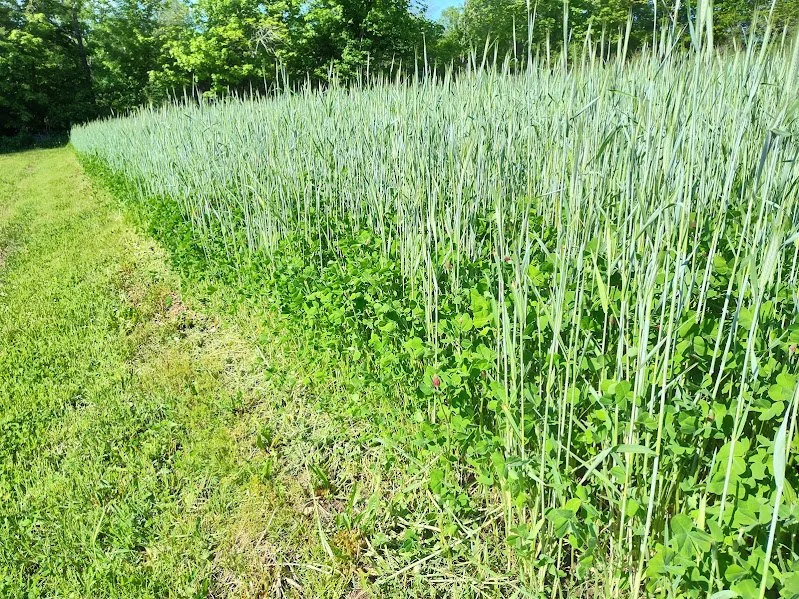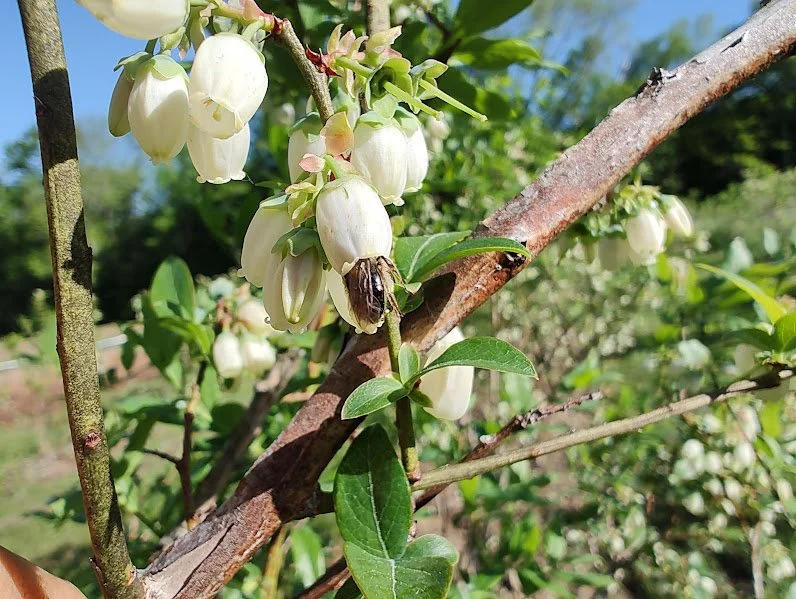13th Week of the Spring CSA season: Week of May 29th
Barn field, photo by Ryan
This Week’s Availability
This week we will have red radishes, green garlic, salad turnips, bok choi, mini red and green head lettuce, mini romaine heads, cilantro, mesclun mix, spicy greens mix, spinach, arugula, baby lettuce, rhubarb, and some plant starts for your garden*.
*If you order a bag for delivery, take note that the items labeled as “plants” are for planting, they aren’t veggies ready to eat or cut flower to display.
Sugar snap peas, photo by Ryan
Farm News from Ryan
What a beautiful week of hot weather! We took advantage of it by postponing our transplanting until next week, and instead working at weed management. Our tractor made many passes through some of our fields on which we are trying to eliminate quack grass. If you garden, you’re probably familiar with quack grass…it has strong rhizomes—lateral underground shoots—that look like tough and sturdy roots. Quack grass has perfected the strategy of slow and steady: the rhizomes grow almost imperceptibly, but in time can take over a space right under your nose. If a few small chunks of quack grass rhizome are left in soil for a growing season, they will slowly spread, not appearing to be too much of a threat to the nearby crops. But after another year, with or without some occasional hoeing or tillage, it will develop a sturdy network of underground rhizomes, a tiny piece of which can grow into another patch. Once you have a network of rhizomes, you have a patch of thick aggressive grass, and it takes a long concerted effort to remove it.
And so, we are in a long and concerted effort to significantly reduce the quack grass population on our fields. This spring we came to the realization that our reduced tillage practices, while effective in many ways, weren’t set up with the attention to detail needed to prevent quack grass from creeping in and establishing itself on the edges of some of those fields. And so, in order continue to develop these climate-smart growing methods that can simplify our work and increase the fertility of this land, we need to make our fields free of quack grass and prevent its re-entry. The first step of this process is to use our tractor to pull a set of steel shanks through several of our fields, loosening soil and pulling the rhizomes to the surface to dry out. Because of the incredible persistence of quack grass, it needs to be done several times over several weeks, ideally in hot dry weather, followed by diligently removing by hand any shoots that remain. It is a straightforward approach and should be effective, but I also know that many times in the past I’ve been humbled by the plants we call weeds.
Otherwise, we did some hand weeding in the hot dry weather, mulched extensively, and trellised the cucumbers that are rapidly growing…it’s hard to believe that cucumbers will be ready to harvest in less than a month. And Taylor heroically packed up thousands of plants in our prop house to go into many people’s gardens. This holiday weekend looks to be good conditions for transplanting…not too cold, not too warm, with a nice soaking rain on Monday. If you keep a garden, I hope you get to enjoy some time caring for it.
-ESF Team: Ryan, Kara, K2, Cindy, Galen, Katie, Taylor, Vanessa, Bryan, and Evan (and Sky and Soraya)
Have you ever had a grilled romaine Caesar salad? Totally divine. The link above describes the process better than I could.
This field was tarped since last fall, killing all the weeds except the dense quackgrass on the edge in the foreground, photo by Ryan
Many of our fields the came out of winter with encroaching quackgrass are being fallowed for several weeks, photo by Ryan
Several shank-tillage passes over several weeks are required to thoroughly loosen and dry out the rhizomes. These rhizomes in firm soil are awaiting another pass with the tractor, photo by Ryan
Field mulched with bark, photo by Ryan
Beets will likely be ready in a week, photo by Ryan
We are super excited to move the CSA cooler soon and expand the pickup space. Photo by Kara
Sunflower seedlings, photo by Adam Ford
Native bee checking out a blueberry flower. I’ve learned that native bees are much more effective than honeybees at pollinating blueberries, photo by Ryan
How about this cool bug?? I found her perfectly still, determined to finish laying her eggs into the moss, in spite of the human with a smartphone inches away. Anyone know who this is? photo by Ryan
Once a field is free of quackgrass, there are many opportunities for long rotations of reduced tillage. These onions are grown with straw and compost mulch, and look awesome, photo by Ryan
Mulched cilantro, scallions and beets, photo by Ryan
Moving hoses, photo by Adam Ford
Maturing rye is a beautiful sight, photo by Ryan
Potatoes emerging, photo by Ryan
She gradually worked her entire head and thorax into the flower. It took her a full minute to collect everything she wanted from inside that single blossom. Photo by Ryan
Crimson clover: stunningly beautiful.


















